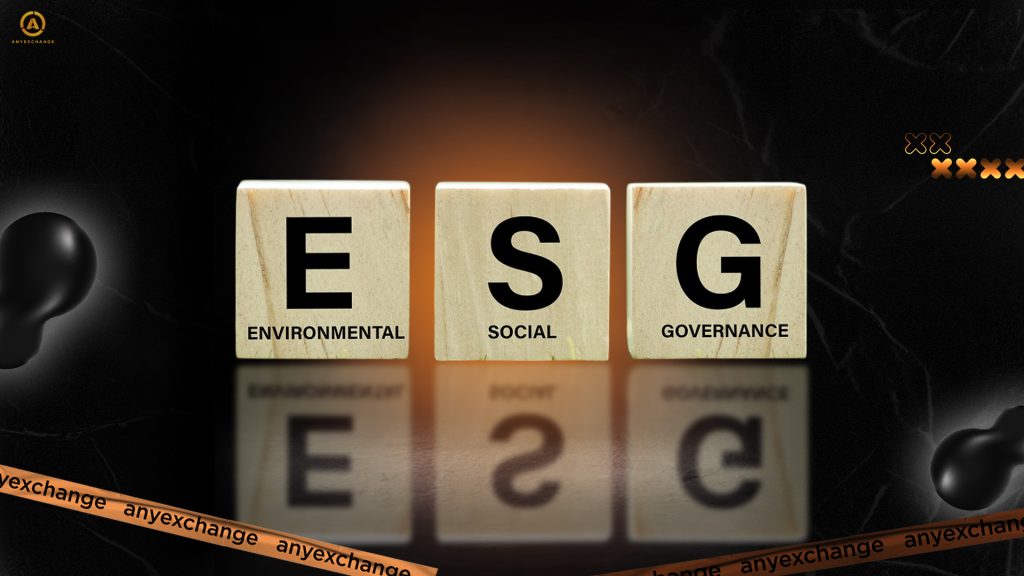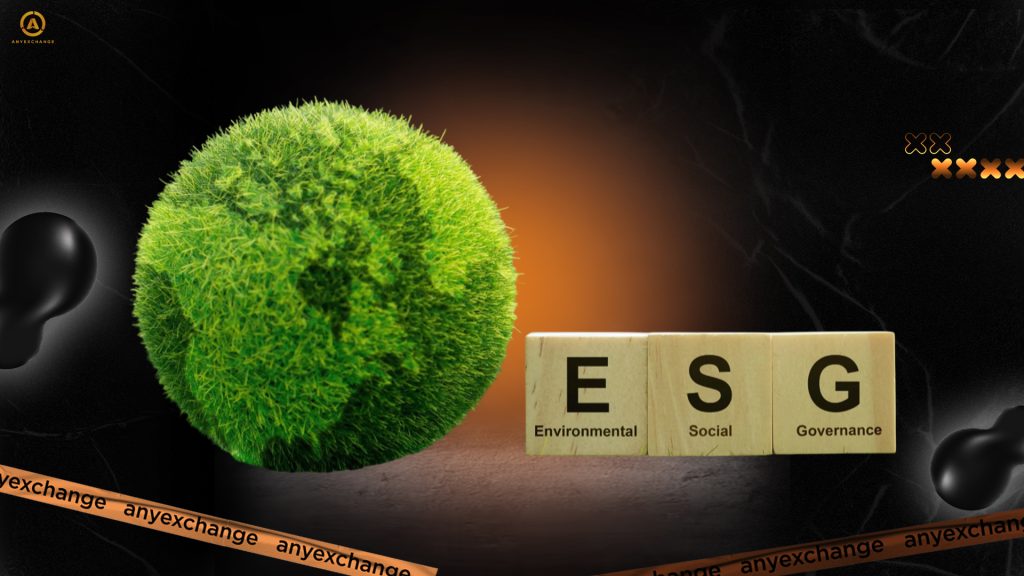
ESG (Environmental, Social, Governance) principles are becoming increasingly important for companies in various industries, including cryptocurrency. The ESG philosophy encompasses environmental sustainability, social responsibility, and transparent corporate governance.
The concept of ESG was first formulated in 2004 in the report “Who Cares Wins”, which was prepared at the initiative of the United Nations together with major financial institutions. Its essence was to demonstrate that the combination of environmental, social and governance factors not only does not contradict the financial interests of companies, but also corresponds to their sustainable development.
Today, ESG principles are being actively applied by institutional investors, funds, banks and companies around the world. Major international agencies are developing specific ESG ratings to assess the extent to which companies comply with these standards.
For the crypto industry, the use of ESG becomes particularly important in the context of the global demand for environmentally friendly, socially just and transparent technologies. As traditional decentralized networks require high energy consumption, green initiatives and green cryptocurrencies are becoming an important part of a long-term sustainability strategy — their use minimizes environmental impact and promotes the use of renewable energy.
In this article, we look at how ESG blockchains are helping the crypto industry achieve sustainability, what innovations and technological solutions are helping to improve the environmental situation, and what the future holds for the crypto market given the growing popularity of green protocols and green tokens.
What is ESG in the context of blockchain?

From a blockchain and cryptocurrency perspective, ESG is an approach that focuses on reducing the negative environmental impact of the technology, increasing social responsibility, and increasing transparency in governance. All of these steps should create an environment for ethical investment.
Reducing the negative environmental impact and adhering to the principles of environmental sustainability primarily means reducing the energy consumption of blockchains. Criticism of the high carbon footprint of traditional networks such as Bitcoin and Ethereum (before the latter’s transition to Proof-of-Stake) has been a major reason to rethink existing practices. The use of energy-efficient protocols and renewable energy are steps towards making cryptocurrencies less harmful to the environment.
In terms of social responsibility, more and more crypto projects are becoming active and joining projects to fund charitable and environmental initiatives. Moreover, decentralized networks with a transparent governance structure can provide a new vision for such projects.
Environmental challenges of blockchains
The PoW consensus algorithm used in bitcoin requires considerable computing power and therefore consumes a significant amount of energy. According to analysts, at its peak in 2024, bitcoin will consume approximately 120 TWh of energy per year, which is comparable to the energy consumption of small countries such as Argentina. As a result, government agencies and environmental organizations are putting pressure on the crypto industry to develop more sustainable and efficient technologies. The issue of carbon neutrality is becoming one of the most important for cryptocurrency projects, especially those that want to integrate into the global economy and fulfill their obligations to society.
At the same time, it is worth noting that by early 2025, the global banking sector will consume approximately 260 TWh per year, which is more than twice the energy consumption of all existing blockchains combined. Understandably, banks maintain branches and serve billions of users, while the use of blockchains is not yet as widespread.
In any case, if the crypto industry wants to avoid reputational and regulatory risks, its energy efficiency must increase in proportion to the proliferation of blockchain technology.
Green Blockchains: Solutions for the Environment

One of the most important ways to achieve sustainability in cryptocurrency is through the adoption of energy-efficient protocols, such as Proof-of-Stake. Since Ethereum transitioned to version 2.0, the network has reduced its energy consumption by more than 99.5%: today, Ethereum consumes less than 0.01 TWh per year, tens of thousands of times less than in the PoW era.
In addition to Ethereum, other green cryptocurrencies inсlude Algorand, Cardano and Solana. Algorand, for example, has been officially recognized as a carbon-neutral blockchain since 2021, Cardano emphasizes science-based blockchain design and high energy efficiency, and Solana uses a unique hybrid Proof-of-History and PoS mechanism to achieve high transaction speeds with relatively low energy consumption.
Projects that integrate renewable energy into the mining and validation process play a special role. For example, the Canadian company Hut 8 and the U.S.-based Aspen Creek Digital Corporation have already switched to solar and wind power for bitcoin mining. According to a report by the Bitcoin Mining Council, by early 2025, the share of mining using clean energy sources will have reached 38%.
In addition, the movement toward carbon neutrality is playing an important role, including participation in carbon offsetting initiatives. Leading projects are partnering with organizations such as the Crypto Carbon Ratings Institute (CCRI), which audits emissions and helps calculate carbon footprints for offsetting. All of this underscores the growing trend toward environmental transparency in the blockchain environment.
Another important trend is Layer 2 solutions that offload the underlying network, allowing transactions to be processed with less energy. These technologies reduce the load on the underlying blockchain, and play a key role in the transition to green mining and greener infrastructure.
Social responsibility in the crypto industry
A growing number of developers have recently demonstrated that cryptocurrencies can bring tangible benefits to society.
For example, blockchains are automating charitable initiatives. In particular, platforms like Giveth and Endaoment use decentralized technology to manage donations: each donation is recorded in a registry, so it cannot be altered or hidden. Initiatives such as these demonstrate that blockchain can be an effective tool for fighting corruption and bureaucracy in philanthropy.
Another area of focus is expanding financial inclusion. In developing countries, where millions of people remain unbanked, crypto innovations are enabling access to credit, savings, and micropayments.
Governance and Transparency (Governance)
The Governance component of ESG is concerned with the quality of governance, accountability and transparency of business processes — and in this aspect, blockchain technology can offer unique advantages.
Decentralized Autonomous Organizations (DAOs) have also become a key tool in this context. They allow project participants to make decisions collectively, managing funds and ecosystem development through open voting.
The immutability of data on the blockchain is another important aspect of ESG. All actions, transactions, and decisions are recorded in a distributed ledger where they cannot be tampered with or deleted. This ensures accountability, making the blockchain a powerful tool for both users and regulators.
Pressure from institutional investors is also an important factor. Cryptocurrencies that want to attract investment from ESG-focused funds need to demonstrate their commitment to high governance standards. ESG governance metrics are becoming a mandatory criterion for assessing the viability and reputation of crypto projects.
Examples of green blockchain projects

Algorand is one of the leaders in the carbon neutral blockchain segment. As early as 2021, the platform will offset all its CO₂ emissions through a partnership with ClimateTrade. At the beginning of 2025, the PoS-powered Algorand will reinforce its commitment by investing in tree planting and clean energy projects in Latin American countries.
Another example is Chia Network, which has proposed an innovative Proof-of-Space-and-Time based mining concept. This approach consumes many times less energy than traditional Proof-of-Work, turning free disk space into a sustainable cryptocurrency asset.
Large industry initiatives such as the Crypto Climate Accord (CCA) bring together companies to achieve carbon neutrality by 2030. Participants inсlude ConsenSys, Web3 Foundation, Ripple, and others. CCA programs aim to implement environmental transparency standards, including mandatory emissions reporting and transitioning to green energy mining.
A separate area is green tokens, which are designed to fund sustainable initiatives. They are used in projects to trade carbon credits, support renewable energy, or raise funds for climate startups. One example is Nori, a token powered by Polygon that allows companies and individuals to offset emissions through a decentralized platform.
Challenges and Limitations of Green Blockchains
- High cost of switching to renewable energy. Not all projects are ready to install solar panels or integrate wind power, especially in regions with unstable economies or lack of government support.
- Greenwashing. There are situations where projects claim to be committed to sustainable development, but in practice do not follow ESG principles. This approach undermines investor confidence and discredits the concept of green cryptocurrencies.
- Regulatory barriers. Not all countries encourage the use of renewable energy or support ESG-driven innovation. Some jurisdictions lack a legal framework for assessing the ethics of investing in cryptocurrency projects.
Overcoming these barriers will require collaboration between developers, investors, regulators and academia. Only an integrated approach will make the crypto industry green and sustainable.
The future of ESG and green blockchains
The outlook for ESG blockchains is promising. Analysts at PwC and Deloitte estimate that the share of ESG-oriented blockchain projects could double by 2030. This is due to both the increased focus on sustainability and the growing demand for ethical investments.
In other words, the future of the crypto industry is increasingly tied to the ESG approach — not as a fad, but as the new norm. Environmental challenges have spurred the creation of green blockchains that can operate efficiently and responsibly towards the planet.
For users and investors, this is a signal to act consciously. Supporting green protocols, choosing ethical investments, and participating in ESG-centric decentralized networks will not only help reduce carbon footprints, but also build a fairer and more sustainable digital economy.
Thank you for your consideration. Invest safely and profitably!
AnyExchange is an exchanger where you can convert cryptocurrencies at the best rate and make fast and anonymous money transfers worldwide.
FAQ
What are green blockchains?
They are blockchains designed with environmental sustainability in mind. They use energy efficient protocols and strive to use renewable energy.
How does ESG impact cryptocurrencies?
ESG requires projects to meet environmental, social and governance standards. This affects technology, governance and helps attract ethical investment.
Which blockchains are the greenest?
For 2025, Algorand, Tezos, Chia and Cardano are considered leaders due to their use of PoS or alternative algorithms and carbon offsetting programs.
Why is mining harmful to the environment?
Traditional PoW mining requires huge amounts of electricity, often from non-renewable sources, which increases the carbon footprint.
How can blockchain help social projects?
Smart contracts can be used to automate charitable giving, increase transparency of donations, and improve access to finance in developing regions.





